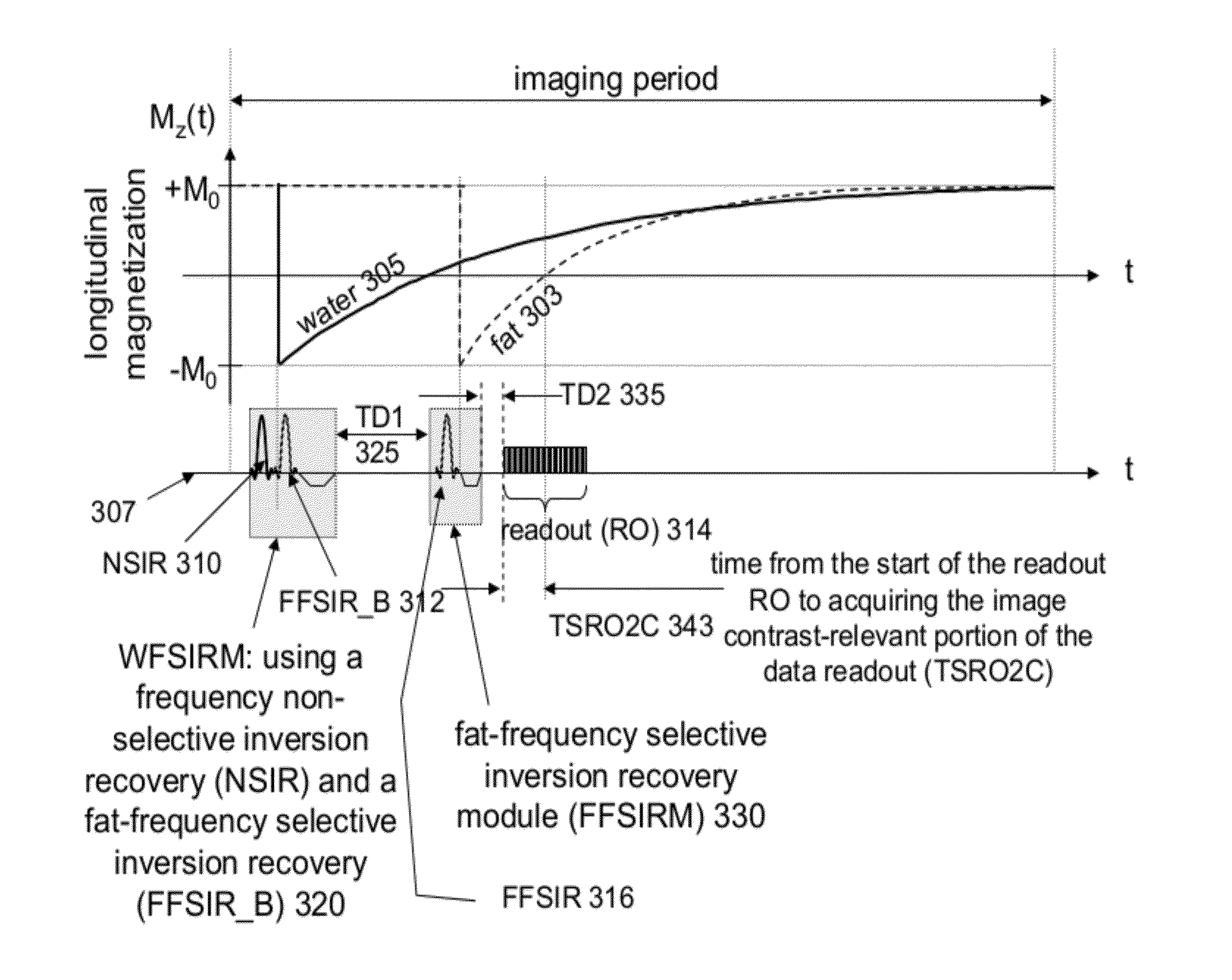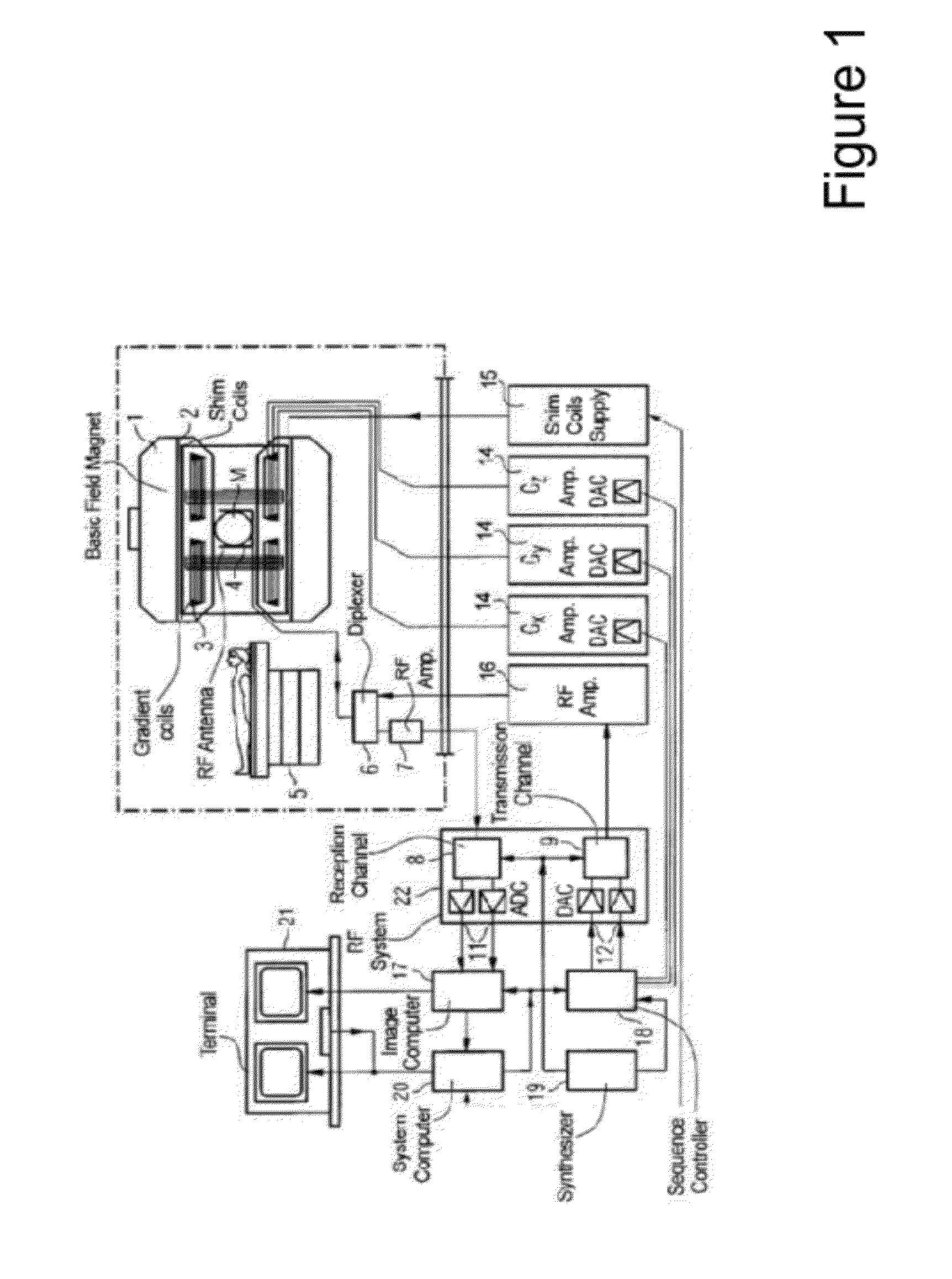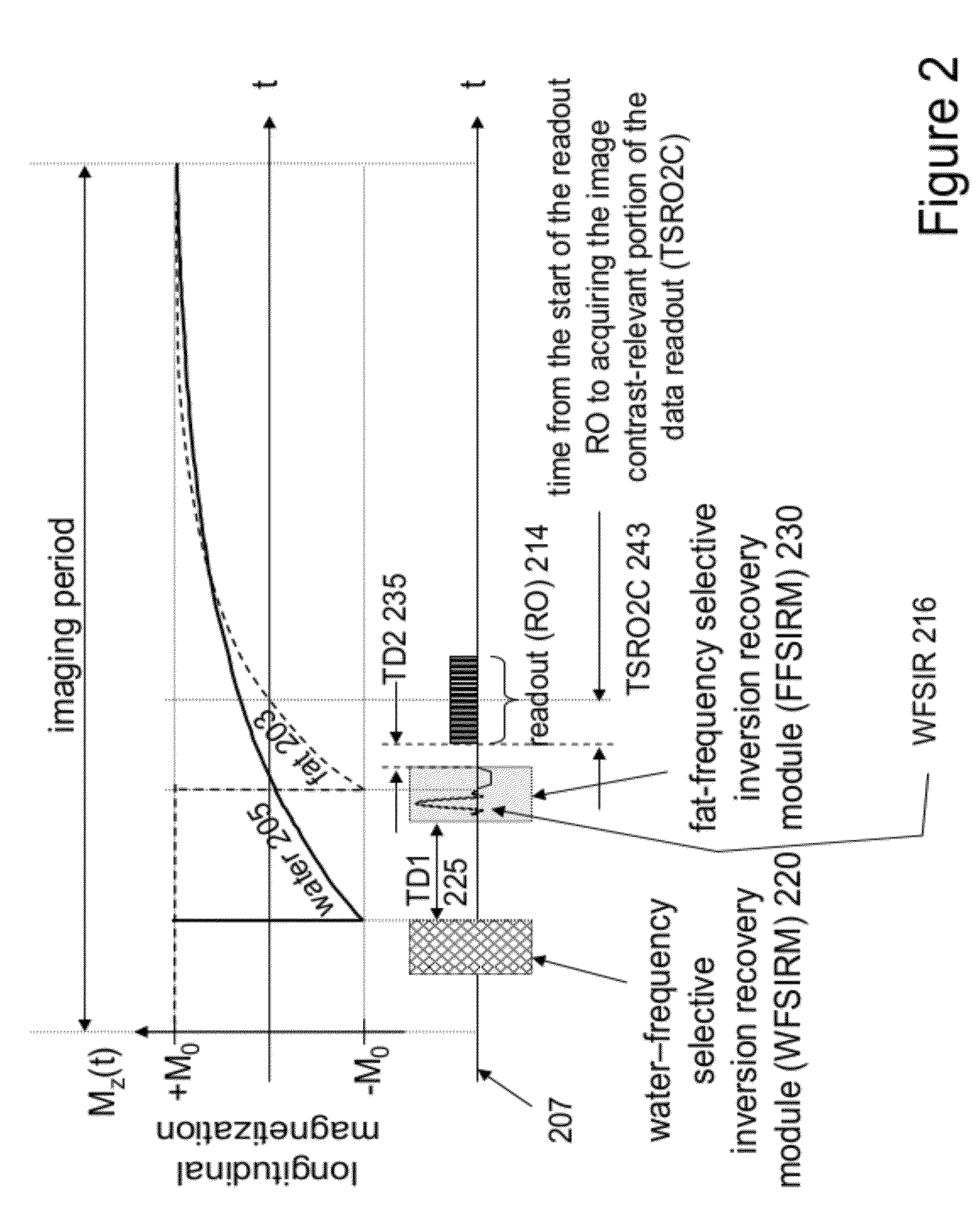System and method for independent manipulation of a fat and a water component in magnetic resonance imaging
water component technology, applied in the field of independent manipulation of a fat and a water component of a magnetic resonance imaging, can solve the problems of inability to achieve optimal clinical segmented inversion recovery protocols, difficult to distinguish between fat and equally bright scar tissue, and poor or no suppression methods when combined with t1-weighted ir. achieve the effect of suppressing fat signal and enhancing visualization of discriminated anatomical elements
- Summary
- Abstract
- Description
- Claims
- Application Information
AI Technical Summary
Benefits of technology
Problems solved by technology
Method used
Image
Examples
Embodiment Construction
[0023]A system employs a robust method to independently invert the magnetization of an MR water signal and an MR fat signal. The system reliably suppresses an MR fat signal in a clinical setting using a manipulation of a fat T1-recovery curve that enables substantially complete fat suppression in the presence of an RF pulse to invert MR water signal, and works for different types of readout. The system robustly and substantially completely suppresses magnetization and associated signal of fat making fat appear dark (black to dark grey) in magnetic resonance images. The fat suppression works in conjunction with T1-weighted IR imaging. The system in one embodiment, rather than using a suppression pulse (also called “saturation” pulse), uses at least one fat frequency-selective inversion pulse to suppress the fat signal. In one embodiment “fat suppression” (fat nulling) is achieved by selectively restoring the fat magnetization after prior inversion with a frequency non-selective inver...
PUM
 Login to View More
Login to View More Abstract
Description
Claims
Application Information
 Login to View More
Login to View More - R&D
- Intellectual Property
- Life Sciences
- Materials
- Tech Scout
- Unparalleled Data Quality
- Higher Quality Content
- 60% Fewer Hallucinations
Browse by: Latest US Patents, China's latest patents, Technical Efficacy Thesaurus, Application Domain, Technology Topic, Popular Technical Reports.
© 2025 PatSnap. All rights reserved.Legal|Privacy policy|Modern Slavery Act Transparency Statement|Sitemap|About US| Contact US: help@patsnap.com



